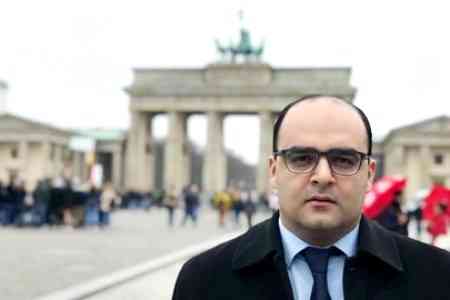


ArmInfo.Deputy Minister of Energy of the Russian Federation Yevgeny Grabchak's statement about the completion of the feasibility study for the project to connect the energy systems of Russia, Azerbaijan and Iran, marks an important stage in the development of a new transit electricity corridor called the <North-South> corridor. Vahe Davtyan, expert in cross-border transport and energy projects, political scientist and Doctor of Sciences, expressed this viewpoint on his Telegram page.
He noted that in the first stage, the project envisages to transfer up to 200 MW of electricity from Russia to Iran, passing through Azerbaijan's energy system, which is a precedent for regional energy redistribution that bypasses Armenia. In fact, we are talking about launching an alternative route that strengthens the Moscow-Baku-Tehran geoenergetic axis, potentially running parallel or even in opposition to the Iran- Armenia-Georgia-Russia energy integration project, that has been long-discussed but never implemented. The latter was seen as a key instrument for institutionalizing the Armenian-Iranian energy partnership and providing the Armenian electric power industry access to the Black Sea region.
However, the lack of a coordinated long-term strategy, fragmented logistics, dependence on the unstable Armenian-Georgian hub, and chronic underfunding of the infrastructure components of this corridor are gradually removing Armenia from the active energy process. The main risk is the marginalization of Armenia in the emerging architecture of regional energy transit. In conditions where neighboring states are consistently institutionalizing their energy interests, Yerevan risks losing even the limited role it has played in the regional electric power industry in recent years. At the same time, the strategic underestimation of energy as an instrument of foreign policy influence turns the Armenian energy system into an object, not a subject of transnational processes. The specialist believes that the new Russia-Azerbaijan-Iran link is not just a technical route, but an indicator of a growing energy gap. Armenia may fall into this gap in the absence of urgent institutional and strategic decisions.